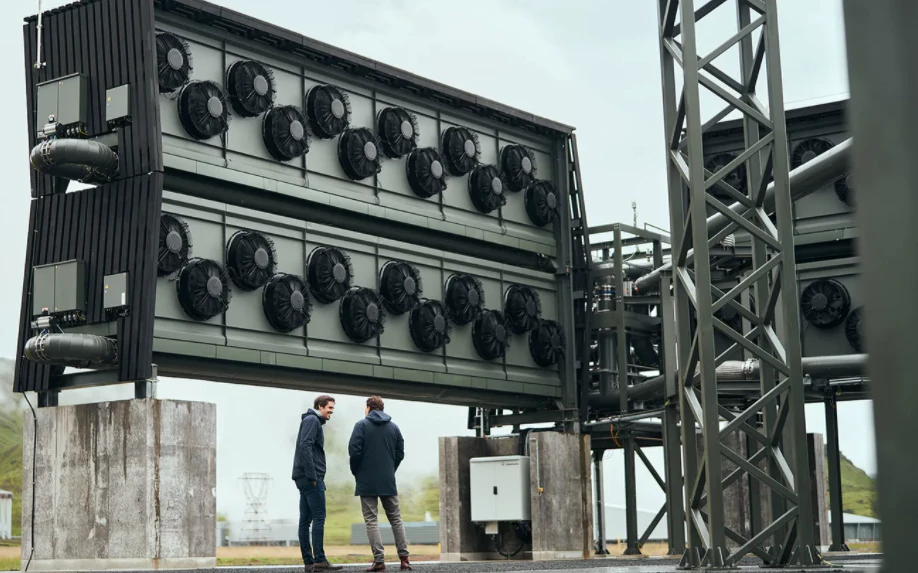An ambitious startup looking to eat into the world's carbon emissions has just taken its biggest bite yet, flicking the switch on the largest direct air capture and CO2 storage plant on the planet. Climework's latest facility is designed to suck carbon dioxide out of the air and store it away permanently underground through a pioneering mineralization process, and features a novel modular design that will be key to the company's plans of scaling up.
Shifting away from fossil fuel use and generating less carbon dioxide in the first place is the key to preventing global temperatures from rising 1.5 ºC (2.7 °F) above pre-industrial levels. However, there are a growing number of technologies emerging that may help us remove what is already there, and could have a part to play in helping us avoid dangerous levels of global warming.
Among those is direct air capture (DAC), which sits apart from carbon sequestration technologies that pull CO2 directly from power plants and instead seeks to collect it from the ambient air. Climeworks has been working at the forefront of this field since the startup was founded in 2009, its system using huge fans to draw ambient air through a filter that selectively captures the CO2 for use in carbonated beverages, or in greenhouses to help grow vegetables.
Traditionally, storing CO2 in underground reservoirs has carried the risk of leaks, but in 2016 a separate group of scientists working on the CarbFix project made a game-changing breakthrough. The researchers had been investigating how reactions between the gas and rocky underground materials can turn CO2 into solid minerals, a natural process that takes hundreds or even thousands of years.
This led to the discovery of a technique that significantly fast-tracks this process, shortening the time it takes to mineralize CO2 to less than two years. This drew the attention of Climeworks, which teamed up with CarbFix on a pilot project at ON Power's Hellisheidi geothermal power plant in Iceland in 2017. Here, the startup's DAC system was used to capture and safely stow away around 12.5 tons of CO2 over three months, turning it into the world's first negative-emissions power plant.

The Hellisheidi geothermal power plant is again home to the company's latest DAC facility, which is called Orca. Work began here in May 2020 relying on a modular construction method where the technology is packed inside stackable units. These units use half the steel of previous designs and also capture CO2 more efficiently, and sitting adjacent to the power plant, are powered entirely by renewable energy.
Orca began operations today and, according to Climeworks, will harvest 4,000 tons of CO2 from the air each year. As it stands this is a drop in the ocean compared to the more than 30 gigatons, or 30 billion tons, of CO2 humans pump into the air every year, but is a marked improvement on what the company was capable of capturing just a few years ago. As it expands, the company plans to scale up its removal capacity to capture millions of tons of CO2 by the second part of this decade.
”Orca, as a milestone in the direct air capture industry, has provided a scalable, flexible and replicable blueprint for Climeworks’ future expansion," says Climeworks co-founder Jan Wurzbacher. "With this success, we are prepared to rapidly ramp up our capacity in the next years. Achieving global net-zero emissions is still a long way to go, but with Orca, we believe that Climeworks has taken one significant step closer to achieving that goal."
Source: Climeworks




